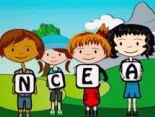As parents getting your heads around all the subject choice your teenager will have at NZ secondary school can be daunting. There have been many additions to the choices you may have had when you were at school and also a lot of name changes since then. Cooking and sewing now goes by Food Technology and Textiles respectively, woodwork is now Design Technology.
Read an overview of the NZ Secondary School Curriculum, covering subjects available to your teenager and what to expect with each of them.
What subjects are generally available?
This table gives you an indication of what subjects are generally available at New Zealand Secondary schools.
| Accounting | Food Technology | Agriculture & Horticulture |
| Human Biology | Art | Japanese |
| Biology | Legal Studies | Business Studies |
| Maori Language | Chemistry | Classical Studies |
| Mathematics | Computer Studies | Media Studies |
| Design Technology | Music | Drama |
| Photography | Economics | Physical Education |
| English | Physics | French |
| Science | Geography | Social Studies |
| German | Spanish | Graphics & Design |
| Textiles | Clothing & Design | Health |
| Typing/Text | Information Management | History |
Each of these fits into one of the seven essential “learning areas” set out by the New Zealand Curriculum Framework.
The seven essential learning areas are the traditional subjects that provide the framework of what a student will learn throughout their school career. All of the ‘branch-off’ subjects have a root in these seven areas. For example Photography is one of The Arts; Human Biology is a Science and so on.
These seven essential Learning Areas are :-
- Health and Physical Education
- Literacy
- Mathematics
- Science
- Social Sciences
- Technology
- The Arts
This is not an exhaustive list of subjects available to students. There are some that are a lot less common and have not been mentioned. For example – Latin and Art History.
Those subjects aren’t available at my teenager’s school so what next?
For varying reasons some schools are unable to offer students all subject options. It may be that the school is unable to source a specialist teacher to deliver the subject or that the number of students wanting to take that subject doesn’t warrant the class running. For example, there may be only two or three students wanting to take Art History or Latin. Schools will not be able to justify the running of these classes in most instances.
However there are options for students caught in this predicament.
- A neighbouring school may be offering that subject to their students. Schools usually have grounds to work with others where this is the case and a student may have their timetable ordered in a way that he/she is able to attend the nearby school for that subject only.
- Look into whether homeschooling is a possibility for your family.
- The Correspondence School (TCS) is the other option for students. The Correspondence School allows students who are enrolled at a face-to-face school but cannot take the subject at their own or neighbouring schools, the opportunity to enroll with TCS in order to continue their studies in that subject.
For information on Te Kura (The Correspondence School) click here.






